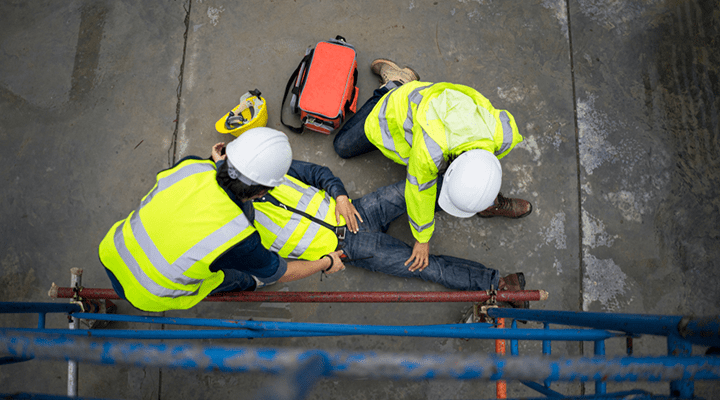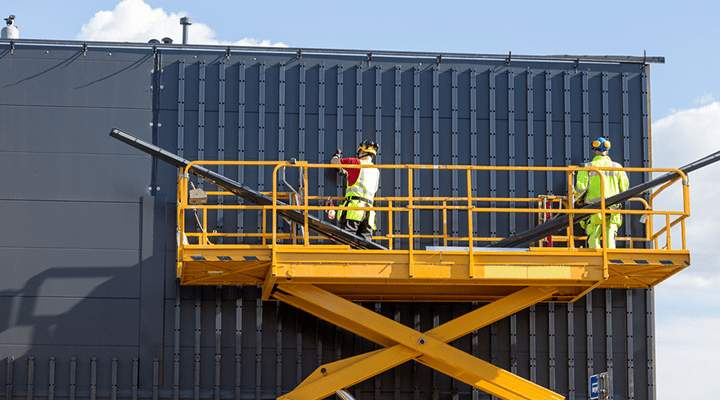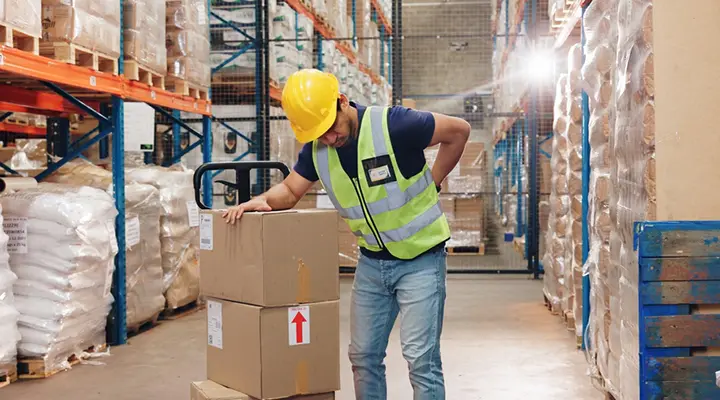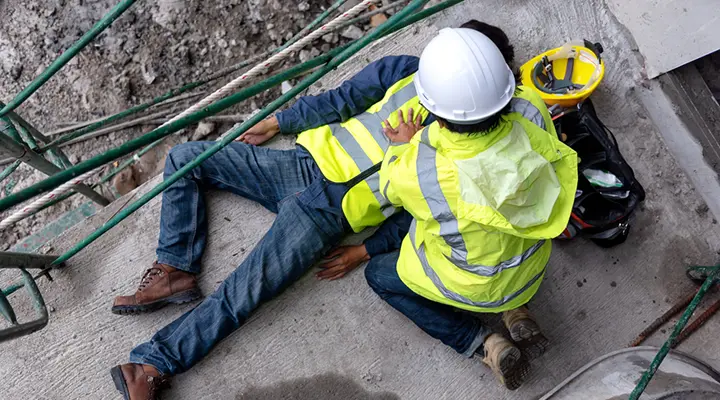The leading cause of fatalities at work in the UK is falling from height, and the industry with the most fatal injuries is the construction industry. Read on to find out more about the causes of workplace fatalities and what to do if a tragedy should occur in your workplace.
Which industries have the most fatal injuries?
Of the 138 fatal injuries to UK workers in 2023/24, the majority were in the construction industry (51), followed by the agriculture, forestry and fishing industry (23). But all is not as it seems.
If you adjust the figures for how many people work in the industries, agriculture, forestry and fishing comes out worst – with more than three times the number of fatal injuries per 100,000 workers than construction. For this reason, agriculture, forestry and fishing could also be considered the most dangerous UK industry to work in.
In fact, agriculture, forestry and fishing has 21 times more fatal injuries than average across all industries. When adjusted for the number of employees, the waste and recycling industry also had more fatal injuries than the construction industry.
High-risk activities in the workplace

What activities are commonly causing problems due to negligence or misunderstanding by staff? And how can businesses ensure risks are taken seriously?
In 2023/24, the main kind of fatal accident was falls from height (50), followed by being struck by a moving vehicle (25) and being struck by a moving object (20).
The remaining deaths were caused by being trapped by something collapsing or overturning (15) and contact with moving machinery (8). If we break that down into percentages of workers killed:
- 36% of workers died due to a fall from height
- 18% of workers died due to being struck by a moving vehicle
- 14% of workers died due to a moving/flying/falling object
Is workplace health and safety improving?
Although there were more fatal injuries to UK workers in 2023/24 compared to the year before, the overall rate of serious injury to workers has generally been decreasing since 1960. Fatal injuries are about five times lower today than they were in the 1960s.
After declining for 60 years, the rate of fatal injuries at work plateaued in the years leading up to the COVID-19 pandemic. Work-related accidents have now returned to the same as pre-COVID levels.
How do you reduce the risk of falling from height?

It is particularly tragic to see so many deaths still happening from falls from height – because these are preventable. The best way to avoid injury is to avoid working at height completely.
If you can’t avoid working at height, here are some ways you can help protect workers from falls:
- Harnesses: Wear a properly fitting harness which is always connected to at least one anchor. Use a deceleration device with a harness to slow down a fall.
- Guardrails: Install safety guardrails to prevent falls.
- Safety Nets: Install safety nets and soft-landing systems to mitigate the consequences and distance of a fall.
- Covering holes: Properly cover or guard risks like holes in the ground, skylights etc. Covers should be more than strong enough to hold employees and materials.
- Equipment Inspection: Workers should inspect protective equipment before every use to ensure it isn’t damaged. A competent person should also check this equipment regularly – following the manufacturer’s advice. Protective equipment should be replaced if frayed, cracked, or damaged.
- Ladders: While ladders are inexpensive, learning how to use a ladder safely is invaluable. This includes considering the condition and position of ladders.
- Responsible working practices: Creating a culture of safe working practices is very important. Workers should be briefed on health and safety, and risk assessments should be put in place. Nobody should operate machinery, drive, or work at height under the influence of drugs or alcohol.
- Training: Ensure all staff are updated with basic health and safety training. Particular attention should be given to working from height training and ladder safety training. We provide training options for staff working at heights here, which can be completed in 1-2 hours.
Who is most at risk in the workplace?
In 2023/24, The vast majority of UK fatal injuries – 95% – happened to male workers. This is partly due to the gender divide in the most affected industries. (1.77 million men were employed in construction in 2024, compared with 271,000 women).
Additionally, workers were twice as likely to experience a fatal injury at age 60-64 and four times more likely aged 65 and over compared to the rest of the workforce.
How to report a work-related death in the UK
When a person dies because of an accident at work, you have legal responsibilities to carry out. You should immediately call the emergency services, but you should not move the body before they arrive. You must also report the death to the health and safety authorities. An investigation will be carried out to get to the bottom of what happened, see if any legal action should be taken, and find ways to prevent similar accidents from occurring in the future.
Following RIDDOR in the workplace
RIDDOR is the law that requires you to record and report workplace accidents, including those causing death. You must report deaths that arise from a work-related accident, including a physical act of violence to a worker. You do not have to report suicides under RIDDOR as this is not considered a work-related accident. Whether it causes death or not, a manager should record all injuries in your accident book, which HSE, the local authority, or ORR inspectors can request to see at any time.
You can report most workplace injuries using the online RIDDOR form.
For fatal and major injuries at work, call the Incident Contact Centre, which operates from Monday to Friday between 8:30 AM and 5 pm (0845 300 9923). Outside of these hours, you can call the duty officer for the following circumstances:
- A work-related death
- A serious incident with multiple casualties
- An incident with major consequences like people getting evacuated, many people going to hospital, or roads being closed
The number for the out-of-hours duty officer is 0151 922 9235.



